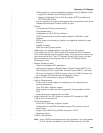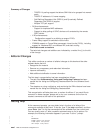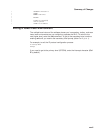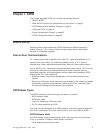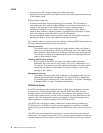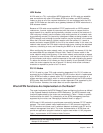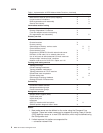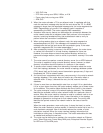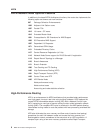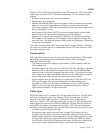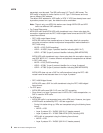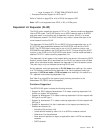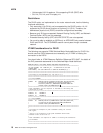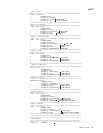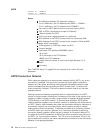v X.25 SVC links
v PPP links running over ISDN, V.25bis, or V.34
v Frame relay links running over ISDN
v ATM SVC.
3. When the router activates a TG to an adjacent node, it negotiates with that
node the maximum message size that can be sent across the TG. If a BIND
message is larger than the negotiated message size, the router segments the
BIND. Segmentation only occurs if the adjacent node is capable of
reassembling the BIND. The router supports BIND reassembly.
4. A session level security feature can be enabled for connections between the
router network node and an adjacent node. Both partners in the connection
require a matching hexadecimal key that enables each node to verify its
partner before the connection is established.
5. When routing session data to an adjacent node, the router segments a
request/response unit (RU) if the message unit exceeds the maximum
message size that can be sent across the transmission group. If the router
receives a segmented RU, the node reassembles it.
6. After successfully locating a resource in the APPN network, the router stores
or
caches
this information in its local directory database for future use.
However, the router does not save these cached directory entries to a
permanent storage medium, such as a disk, to provide for recovery if the node
fails.
7. The router cannot be used as a central directory server for an APPN network.
The router is capable of using a central directory server, however, to obtain
directory information about the location of a resource in the network.
8. To prevent other network nodes from discarding information about the router
from their topology databases, the router creates a topology database update
(TDU) about itself and its locally-owned transmission groups every 5 days and
broadcasts this TDU to network nodes.
9. An interval timer is associated with every resource entry in the router’s network
topology database. If the router does not receive any information about a
resource within 15 days, it discards the entry for that resource from the
database.
10. If there is more than one least-weight route from an origin LU to a destination
LU for a given class of service, the router randomly selects one of these routes
for the session. This practice helps distribute the flow of traffic in the network.
11. The router maintains a copy of the network topology database. The database
identifies the available routes to other network nodes for a particular class of
service. When the router needs to calculate a route to a network node or to an
end node adjacent to that network node, it uses information in the topology
database to generate a routing tree for that network node. The routing tree
identifies the optimal routes to the network node for the class of service
required.
When the router generates a new routing tree, it stores that tree in a cache.
When the router receives a service request, it checks this cache first to see if a
route has been computed. Use of the cache reduces the number of route
calculations required. When the router receives topology information that
invalidates a routing tree, it discards the tree. The router recalculates the tree
as needed and caches the new tree.
12. The router can be defined as a member of a connection network on Ethernet
ports, Token-Ring ports, Frame Relay BAN ports, Enterprise Extender Support
for HPR over IP, and ATM ports.
APPN
Chapter 1. APPN 5



